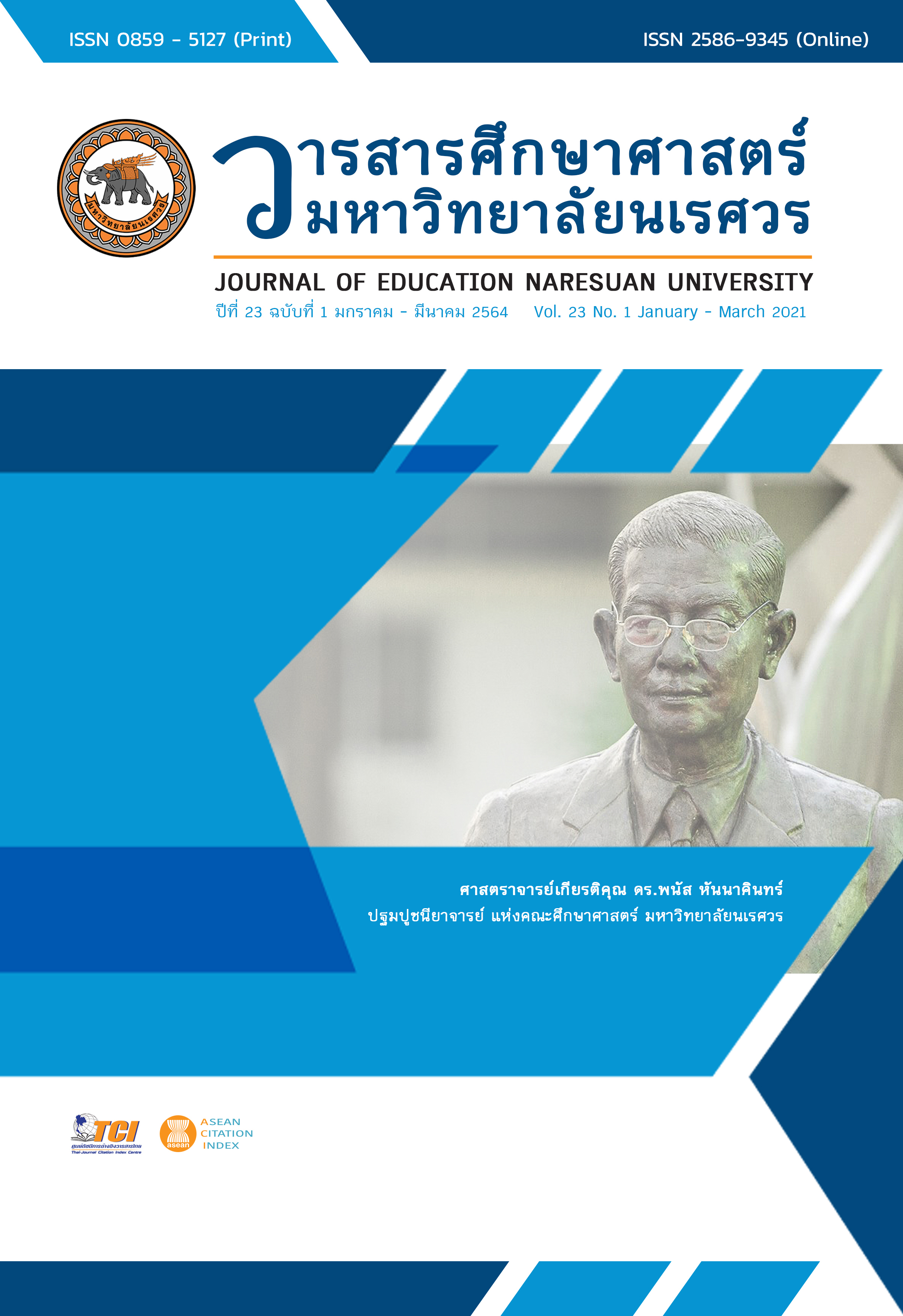AN ACTION RESEARCH ON DEVELOPING LEARNING MANAGEMENT IN THE TOPIC OF ACID BASE USING ENGINEERING DESIGN PROCESS FOLLOWING STEM EDUCATION TO ENHANCE GRADE 11 STUDENTS’ CREATIVITY AND INNOVATION SKILL การวิจัยปฏิบัติการเพื่อพัฒนาการจัดการเรียนรู้ เรื่อง กรด-เบส โดยใช้การจัดการเรียนรู้ผ่านกระบวนการออกแบบเชิงวิศวกรรมตามแนวทางสะเต็มศึกษาที่ส่งเสริมทักษะการสร้างสรรค์และนวัตกรรมของนักเรียนระดับชั้นมัธยมศึกษาปีที่ 5
Main Article Content
Abstract
This qualitative research aimed to study way to use the learning approach through engineering design process following stem education in learning the topic of acid base to enhance 11th grade students’ creativity and innovation skill. The research participants were 49 students in 11th grade of regional science high school in the lower northern zone. The research methodology was the classroom action research comprising of three action spiral loops and took totally 15 hours in this study. The instruments used in the research were 1) three lesson plans based on engineering design process in the topic of acid base,
2) activity/work sheets, 3) reflective learning journals, 4) work evaluation form, and 5) work sheet evaluation form. Data were analyzed by using content analysis technique and data creditability checked by triangulation method. The results revealed that 1) the way to use the learning approach through engineering design process following stem education in learning the topic of acid base composed of eight steps as follow: 1) engaging, 2) problem identification, 3) related information search, 4) solution design 5) planning and development, 6) testing, evaluation and design improvement, 7) presentation, and 8) summary and evaluation. Furthermore, the teacher should emphasize on review students’ fundamental knowledge required for designing work piece and solving problems, selecting problem situation in real life that lead students to apply various designing work piece, and encouraging students to regularly do activities. And 2) Most of students were at high level of creativity and innovation skill. For subscale of creativity and innovation skill, most of students were at high level in fluency and elaboration. While students were in moderate level in flexibility and originality.
Article Details
The owner of the article does not copy or violate any of its copyright. If any copyright infringement occurs or prosecution, in any case, the Editorial Board is not involved in all the rights to the owner of the article to be performed.
References
Brophy, S., Klein, S., Portsmore, M., & Rodgers, C. (2008). Advancing engineering education in P-12 classrooms. Journal of Engineering Education, 97(3), 369–387. doi:10.1002/j.2168-9830.2008.tb00985.x
Chomphupart, S. (2011). A development of instructional behavior for the creative problem solving of teachers and students at the science gifted students promotion school using Emancipatory action research (Doctoral dissertation). Bangkok: Srinakharinwirot University. [in Thai]
Dechakup, P., & Yindeesuk, P. (2015). Teaching in the 21st century (2nd ed.). Bangkok: Chulalongkorn University Press. [in Thai]
Dittacharuen, C. (2014). Developing the creative thinking and learning achievement of grade 12 students using project learning base on Constructionism theory of an apply robot subject. Panyapiwat Journal, 5(2), 205-216. [in Thai]
Householder, D. L., & Hailey, C. E. (2012). Incorporating engineering design challenges into STEM courses. Retrieved April 28, 2017, from http://digitalcommons.usu.edu/ncete_publication
Karnkarunyakul, H. (2013). The development of sketching design book based on Constructivism to enhance creative thinking of Mathayomsuksa four students (Master thesis). Bangkok: Silpakorn University. [in Thai]
Kemmis, S., & McTaggart, R. (2000). Participatory action research. In N. Denzin & Y. Lincoln (Eds.), Handbook of qualitative research. Thousand Oaks, CA: Sage.
Kijkuakul, S. (2015). STEM education (Part II): How to integrate stem education in classroom teaching. Journal of Education Naresuan University, 17(3), 154-160. [in Thai]
Khammani, T. (2014). Teaching: Knowledge for organizing processes effective learning (18th ed.). Bangkok: Chulalongkorn University Press. [in Thai]
Ministry of Education. (2008). The Basic Education Core Curriculum B.E. 2551. Bangkok: Agricultural Cooperatives of Thailand. [in Thai]
Mincharat, P. (2015). The effects of problem-based learning with STAD to promote collaborative problem solving competency in Chemical Bonding (Independent study). Phitsanulok: Naresuan University. [in Thai]
Morgan, J. R., Capraro, M. M., & Capraro, R. M. (2013). STEM project-based learning: An integrated science, technology, engineering, and mathematics (STEM) approach. Rotterdam: Sense.
Phanmanee, A. (2014). Creative thinking training (2nd ed.). Bangkok: Chulalongkorn University Press. [in Thai]
Pornrungroj, C. (2003). Creative thinking. Bangkok: Chulalongkorn University Press. [in Thai]
Siripattrachai, P. (2013). STEM education and 21st century skills development. Executive journal Bangkok University, 33(2), 49-56. [in Thai]

